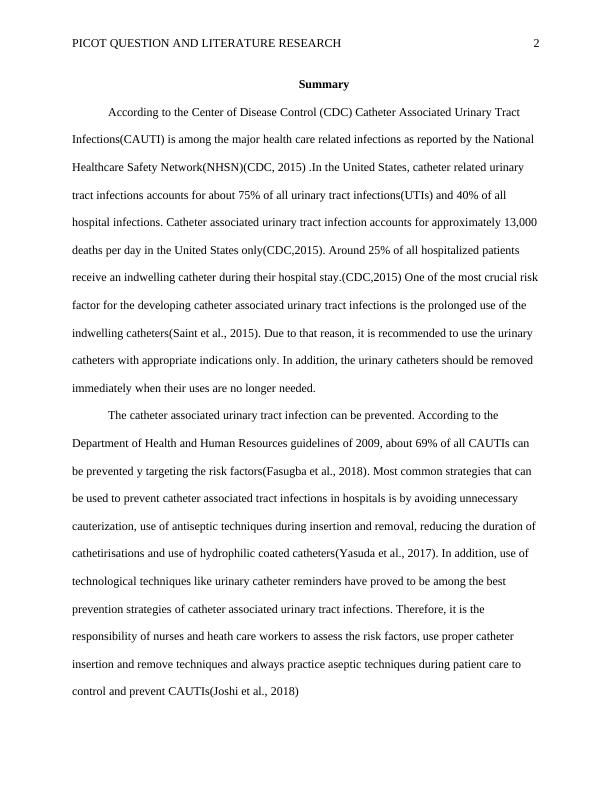Report about Picot Question and Literature Research
7 Pages1434 Words25 Views
Added on 2022-09-26
Report about Picot Question and Literature Research
Added on 2022-09-26
ShareRelated Documents
End of preview
Want to access all the pages? Upload your documents or become a member.
Preventive Strategies for Lowering Catheter Associated UTI Risks
|7
|1808
|20
Reply to "Comments on the Effective Prevention of Cath catheter Associated Urinary Tract Infections in Saudi Arabia"
|3
|533
|180
Clinical Management | Presentation
|17
|1561
|26
Catheter Associated Urinary Tract Infection as a Nursing Practice Problem
|8
|1618
|216
Clinical Prediction Rule for Catheter Associated Urinary Tract Infections in ICU Patients
|6
|1402
|156
Preventing Catheter Related Urinary Infections: A Literature Review
|35
|9404
|231



